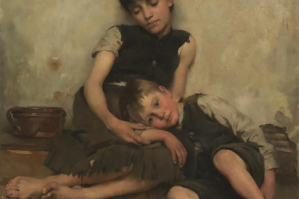Byzantium 330-1453
Exhibition at the Royal Academy 25 October - 2008 - 22 March 2009
This magnificent exhibition charts the history of the Byzantine Empire from its foundation around 330 by the Roman emperor Constantine, to its final destruction by the Crusaders in 1204 and conquest by the Ottomans in 1453. It brings together more than 340 priceless objects many of which have never been exhibited together before.
Above the entrance, hangs a huge 13th century copper choros or chandelier, holding dozens of candles and crosses on filigree-patterned chains.
In the first room, a 4th century bronze cast of the head of Constantine shows him still very much the Roman Emperor. Constantine had put an end to the persecution of Christians and declared Christianity a legal religion in the Roman empire around 1313. His new city of Constantinople (now Istanbul) founded in 330. went on to flourish as the Christian capital of a reduced Roman empire for centuries. With its gardens, fountains, colonnaded streets, palaces and monumental domed churches, Constantinople was described by travellers in the 9th century as the most beautiful city in the world.
Several of the early artifacts in the exhibition retain images from Roman classical mythology, among them a 6th century mosaic pavement depicting the personifications of the months and a gold medallon of Justinian I.
There are many stunning icons, including the Virgin Psychosostria with a little wriggling Baby Jesus, a beautiful Annunciation, St Theodore, and St Michael the Archangel. Some of the most touching exhibits are the personal domestic items; a child's hooded robe and a tiny pair of shoes, painted plates, knives and spoons. There is beautiful jewelry including a gold body chain.
Others treasures are a huge carved crystal: the Virgin's Grotto, The Antioch Chalice, and the intricate gold model of a domed building, used possibly asan oil burner or incense brazier, (which the RA has on their posters).
Towards the end, the exhibition began to feel more dramatic as there were several larger icons, including some from from St Catherine's Monastery in Sinai and a number of glittering micro-mosaics - among them a stalwart-looking Archangel Michael - silver gilt on wood, gold cloisonne enamel, precious stones - and a very gentle Christ with Saints Sergios and Bacchos. These icons have been venerated for centuries and it is hard to walk past them without saying a prayer.
The last item jolts one back to reality. The Icon of the Heavenly Ladder of St John Klimakon from St Catherine's Monastery depicts monks patiently climbing up the ladder to Heaven where they are being invited in. Above them a group of angels are urging them on while underneath spikey little devils are doing their best to poke and drag people down to Hell.
The exhibition is accompanied by a very good audio guide. There is so much to see, it is worth a long visit. For more information see: www.royalacademy.org.uk/
Byzantium 330-1453 is supported by The JF Costopoulos Foundation, the AG Leventis Foundation and the Stavros Niarchos Foundation.


















